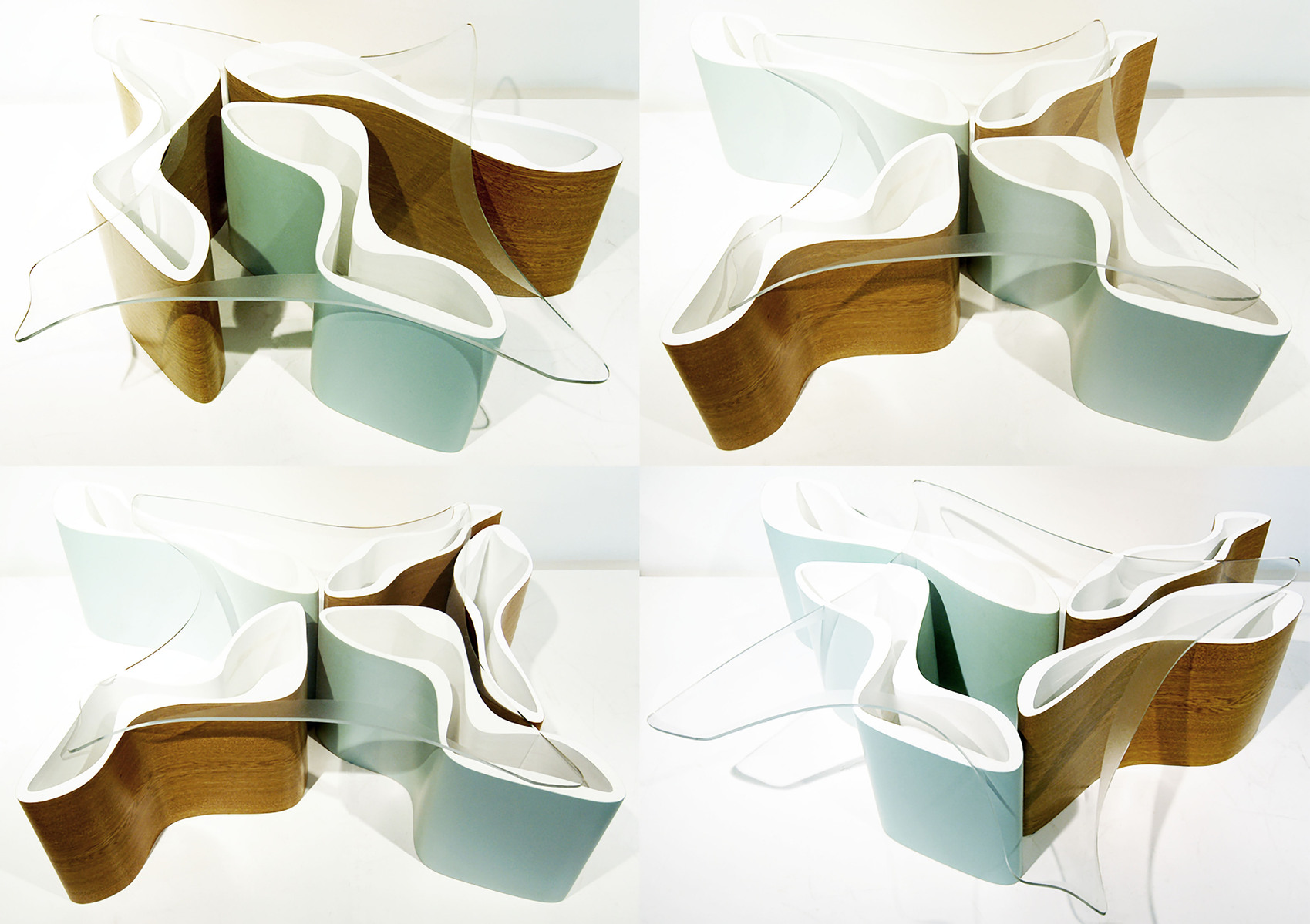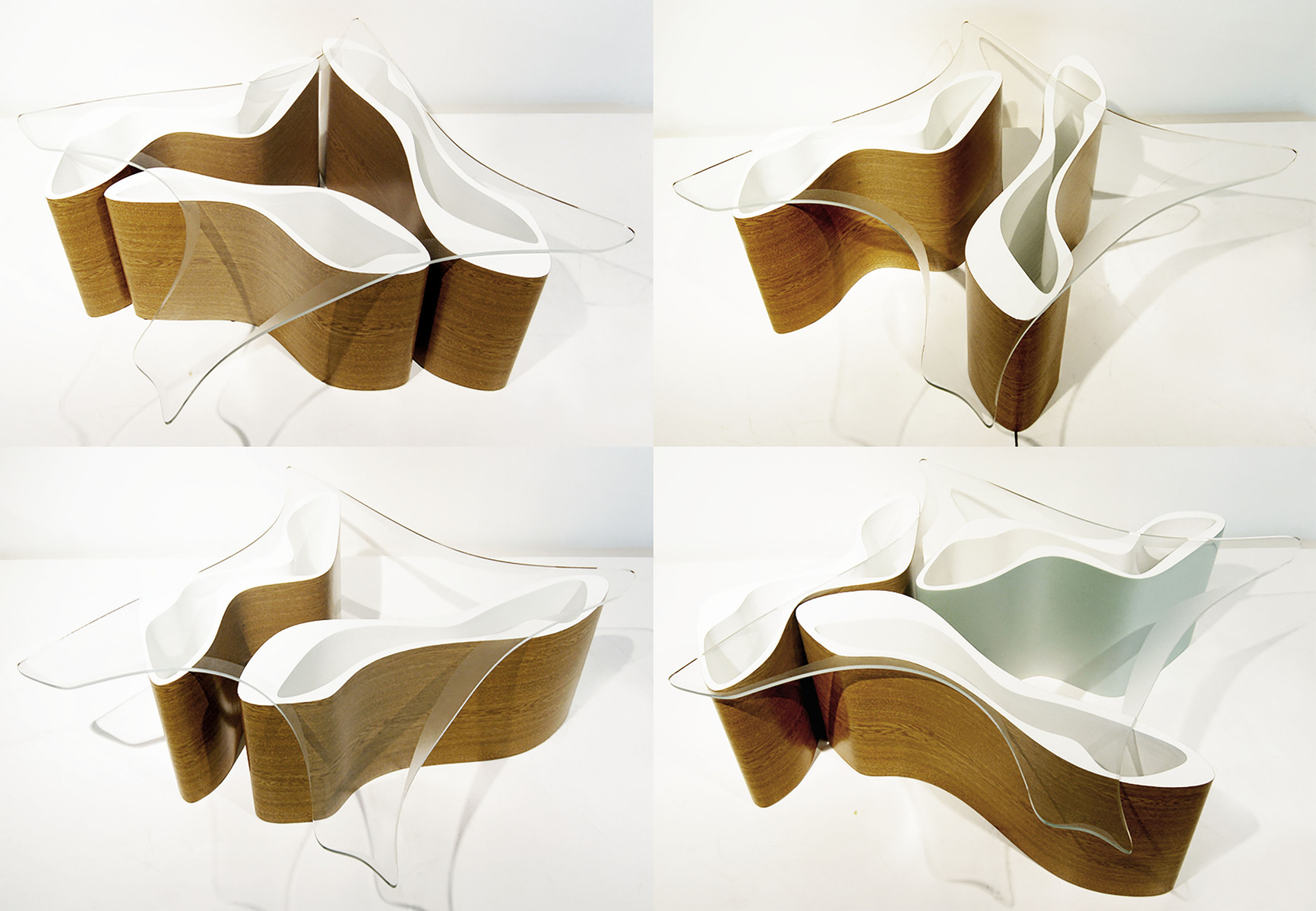Inspired by the geometry and division metabolism of cell structure, the Cell Coffee Table is designed to be metamorphosed by the user. Most furniture are static objects and can become mundane in its existence as time goes on. The Cell table creates the ability that allows the owner to change its structure, aesthetic and finishes according to his/her wish. The table is composed initially of 4 individual structural legs which can be deducted or added to alter completely its geometry. Each structural leg can also be replaced with different finishes and the placement of the legs are completely dependent on the user. The glass table top is also movable as none of the components of the table is fixed. Because of its highly irregular curvilinear structure, the table allows the user to create thousands of geometrical variables through different color and structural combination. The main idea the design is that whenever the user is “bored” with a piece of furniture, he/she does not have to discard it completely and can replace components within the design. Apart from allowing the user to save money, it also contributes drastically less environmental wastage. The principle of giving the user the role of the creator also improves the longevity of the product’s novelty. The main structural legs are constructed out of medium density fiberboards (MDF) which are basically scrap wood residual compress with resin into a solid material. This material’s principle is the usage of any discarded wood and is very cheap and easy to come by. It also contributes zero level of deforestation as it does not require any cutting or cultivation of new trees.






